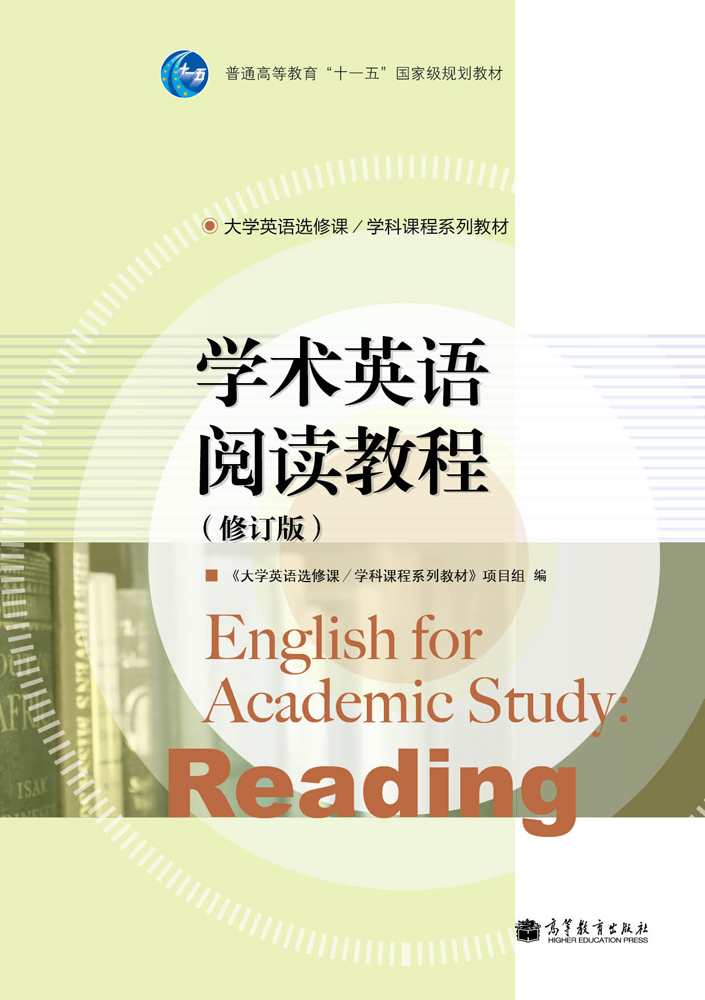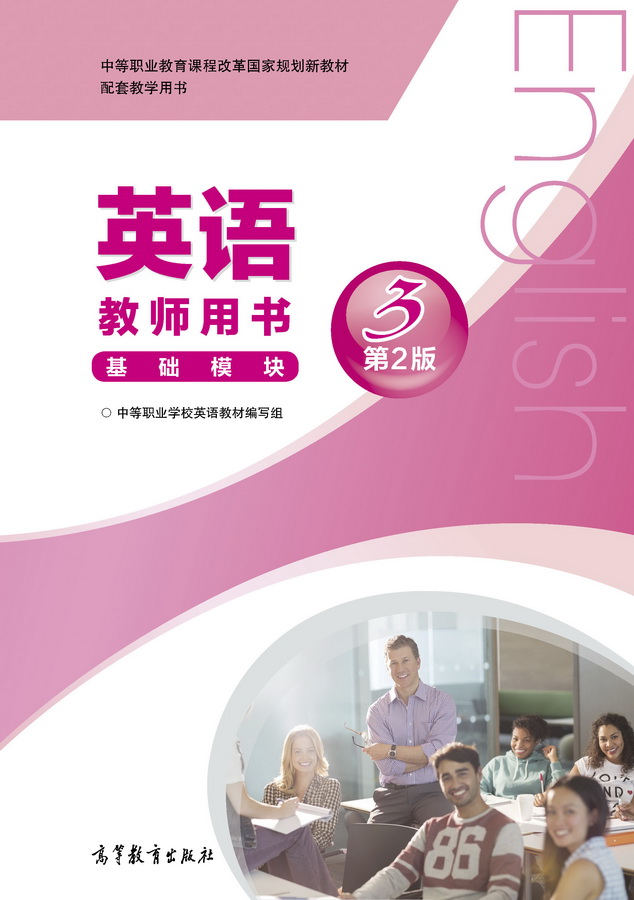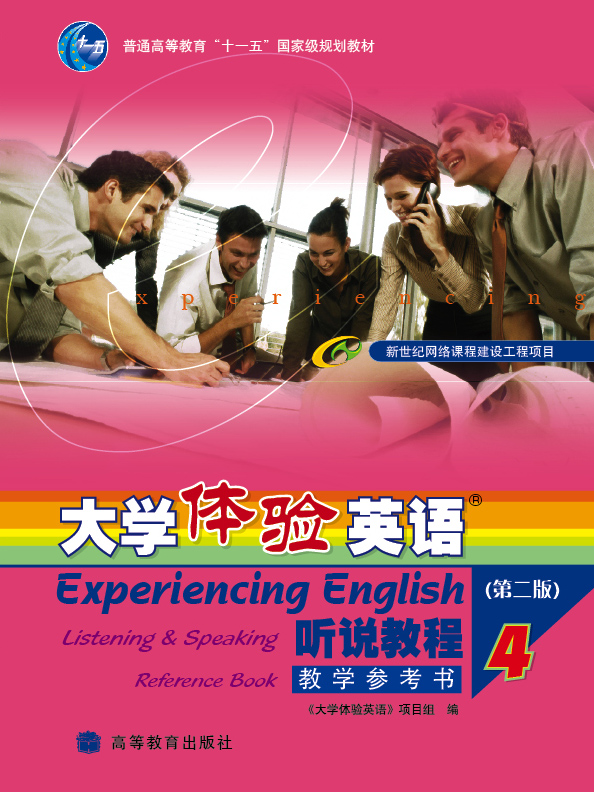Portraits of Chinese Schools
定价:¥90.00
作者: Jun Feng, Ying Jin, et al.
出版时间:2016-08-22
出版社:高等教育出版社
- 高等教育出版社
- 9787040464245
- 1
- 208581
- 40195974-7
- 平装
- 16开
- 2016-08-22
- 160
- 292
目录
Foreword
Acknowledgements
Translator's Postscript
Chapter 1 Introduction: Unveiling the Mystery of Chinese Schools
1. Chinese Schools in an Ever-Changing World
2. A Panoramic View of Chinese Schools: Key Factors
3. Methodologies
References
Part 1 Chinese Students
Chapter 2 A Long but Colorful Day
1. Intensive Classroom Learning
2. Flag-Raising Ceremony as a Means of Education
3. Multi-Functional Class Meeting Activities
4. Competition for Titles and Honors
5. Frequent Exams
6. Rich Activities of Student Societies
7. Homework
References
Chapter 3 Chinese Students' Collective Identity
1. Social Grouping: Building Social Identity
2. Social Comparison
3. Positive Distinctiveness: Self-Motivation of Group Members
References
Chapter 4 The Gaokao Experience of Chinese Students
1. A Chinese Student's Gaokao Journey to University
2. Year 3 Preparation Stage
3. The Day of the Gaokao
4. The Follow-Up Stage
5. Reflection on the Gaokao Journey
Reference
Part 2 Chinese Parents
Chapter 5 A Tiring but Happy Day for Chinese Parents
1. Excessive Love
2. Parent-School Cooperation
3. Pervasive "Shadow Education"
4. Lack of Proper Family Education
References
Chapter 6 Upbringing Methods and Educational Philosophy for Chinese Parents
1. Features of the Chinese Family
2. The Multiple Facets of Chinese Parents and Their Educational Philosophies
3. Understanding and Reflections from a Cross-Cultural Perspective
References
Chapter 7 School Choice: A Harsh Journey for Chinese Parents
1. Motivations
2. Criteria
3. Capabilities
4. Instruments
5. The Dilemma
References
Part 3 Chinese Teachers
Chapter 8 A Typical Day of a Head Teacher in China
1. Busy Schedule
2. Supervising Studies
3. Promoting Students' Healthy Development
4. Organizing Various Activities
5. As a United Group
6. Coordinating the Trilateral Relations among Students, Families and School
7. Active Participation in School Affairs
8. Seeking Self-Improvement
9. Head Teachers' Views of Themselves
References
Chapter 9 Diverse Images of Chinese Teachers
1. The Traditional Image of Chinese Teachers
2. Images of Teachers during the New Curriculum Reform
3. Teachers' Self-Perception
4. Reasons for Changes in the Image of Teachers
References
Chapter 10 The Value of Education: Chinese Teachers' Teaching and Peda- gogy Research
1. TR: School-Based Teachers' Professional Development
2. PR: From Practice and for Practice
3. The Outlook for TR and PR
References
Part 4 Chinese Principals
Chapter 11 A Typical Day of a Chinese Principle
1. Busy, Busy, Busy
2. Daily Affairs
3. A Busy Heart Makes Life Really Busy
4. Busy in an Orderly Way
5. Busy yet Content
Reference
Chapter 12 Principal Selection
1. What Are the General Profiles of Principals?
2. How Have They Become Principals?
3. Professional Standards for the Principal
References
Chapter 13 The Innovative Leadership of China's Excellent Principals
1. External Assistance
2. Structural Optimization and Incentives Mechanism
References
Part 5 School Organization in China
Chapter 14 High Quality Schools in China: Demonstration Senior Middle Schools
1. Introduction of the "Demonstration Senior Middle School" Policy
2. Motivations for Becoming a Demonstration Senior Middle School
3. Selection Process
4. Positive Influence
References
Chapter 15 Conglomeration as an Organizational Innovation in China's School Education
1. The Background: The Need of the Times
2. The Mission of Improving Regional Education
3. Organizational and Administrative Innovation in Educational Conelomeration
4. Three Main Characteristics of the Educational Conglomeration
Reform
5. Case Study of Reform on Educational Conglomeration
References
Chapter 16 Epilogue: Colorful and Dynamic Chinese Schools
1. Discrepancies in Educational Targets
2. Joy and Pain in the Development of Chinese Students
3. Anxieties and Expectations of the Chinese Parents
4. Expectations and the Liberation of Chinese Teachers
5. Dilemma and Breakthrough for Chinese Principals
6. Evolution and Variation of Chinese School Organization
Acknowledgements
Translator's Postscript
Chapter 1 Introduction: Unveiling the Mystery of Chinese Schools
1. Chinese Schools in an Ever-Changing World
2. A Panoramic View of Chinese Schools: Key Factors
3. Methodologies
References
Part 1 Chinese Students
Chapter 2 A Long but Colorful Day
1. Intensive Classroom Learning
2. Flag-Raising Ceremony as a Means of Education
3. Multi-Functional Class Meeting Activities
4. Competition for Titles and Honors
5. Frequent Exams
6. Rich Activities of Student Societies
7. Homework
References
Chapter 3 Chinese Students' Collective Identity
1. Social Grouping: Building Social Identity
2. Social Comparison
3. Positive Distinctiveness: Self-Motivation of Group Members
References
Chapter 4 The Gaokao Experience of Chinese Students
1. A Chinese Student's Gaokao Journey to University
2. Year 3 Preparation Stage
3. The Day of the Gaokao
4. The Follow-Up Stage
5. Reflection on the Gaokao Journey
Reference
Part 2 Chinese Parents
Chapter 5 A Tiring but Happy Day for Chinese Parents
1. Excessive Love
2. Parent-School Cooperation
3. Pervasive "Shadow Education"
4. Lack of Proper Family Education
References
Chapter 6 Upbringing Methods and Educational Philosophy for Chinese Parents
1. Features of the Chinese Family
2. The Multiple Facets of Chinese Parents and Their Educational Philosophies
3. Understanding and Reflections from a Cross-Cultural Perspective
References
Chapter 7 School Choice: A Harsh Journey for Chinese Parents
1. Motivations
2. Criteria
3. Capabilities
4. Instruments
5. The Dilemma
References
Part 3 Chinese Teachers
Chapter 8 A Typical Day of a Head Teacher in China
1. Busy Schedule
2. Supervising Studies
3. Promoting Students' Healthy Development
4. Organizing Various Activities
5. As a United Group
6. Coordinating the Trilateral Relations among Students, Families and School
7. Active Participation in School Affairs
8. Seeking Self-Improvement
9. Head Teachers' Views of Themselves
References
Chapter 9 Diverse Images of Chinese Teachers
1. The Traditional Image of Chinese Teachers
2. Images of Teachers during the New Curriculum Reform
3. Teachers' Self-Perception
4. Reasons for Changes in the Image of Teachers
References
Chapter 10 The Value of Education: Chinese Teachers' Teaching and Peda- gogy Research
1. TR: School-Based Teachers' Professional Development
2. PR: From Practice and for Practice
3. The Outlook for TR and PR
References
Part 4 Chinese Principals
Chapter 11 A Typical Day of a Chinese Principle
1. Busy, Busy, Busy
2. Daily Affairs
3. A Busy Heart Makes Life Really Busy
4. Busy in an Orderly Way
5. Busy yet Content
Reference
Chapter 12 Principal Selection
1. What Are the General Profiles of Principals?
2. How Have They Become Principals?
3. Professional Standards for the Principal
References
Chapter 13 The Innovative Leadership of China's Excellent Principals
1. External Assistance
2. Structural Optimization and Incentives Mechanism
References
Part 5 School Organization in China
Chapter 14 High Quality Schools in China: Demonstration Senior Middle Schools
1. Introduction of the "Demonstration Senior Middle School" Policy
2. Motivations for Becoming a Demonstration Senior Middle School
3. Selection Process
4. Positive Influence
References
Chapter 15 Conglomeration as an Organizational Innovation in China's School Education
1. The Background: The Need of the Times
2. The Mission of Improving Regional Education
3. Organizational and Administrative Innovation in Educational Conelomeration
4. Three Main Characteristics of the Educational Conglomeration
Reform
5. Case Study of Reform on Educational Conglomeration
References
Chapter 16 Epilogue: Colorful and Dynamic Chinese Schools
1. Discrepancies in Educational Targets
2. Joy and Pain in the Development of Chinese Students
3. Anxieties and Expectations of the Chinese Parents
4. Expectations and the Liberation of Chinese Teachers
5. Dilemma and Breakthrough for Chinese Principals
6. Evolution and Variation of Chinese School Organization






